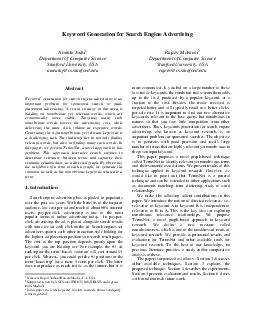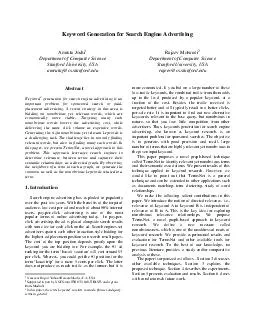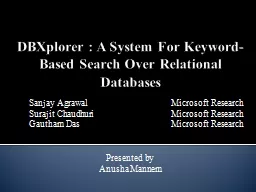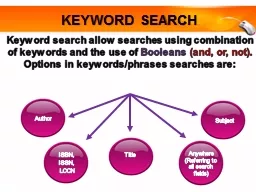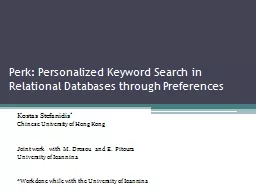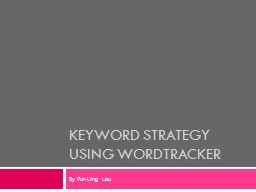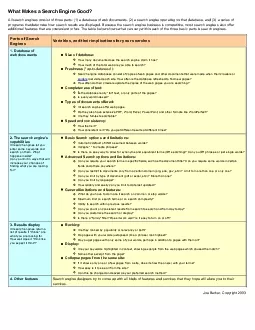PDF-Keyword Generation for Search Engine Advertising Amruta Joshi Department of Comp
Author : lois-ondreau | Published Date : 2014-09-30
stanfordedu Rajeev Motwani Department of Computer Science Stanford University USA rajeevcsstanfordedu Abstract Keyword generation for search engine advertising is
Presentation Embed Code
Download Presentation
Download Presentation The PPT/PDF document "Keyword Generation for Search Engine Adv..." is the property of its rightful owner. Permission is granted to download and print the materials on this website for personal, non-commercial use only, and to display it on your personal computer provided you do not modify the materials and that you retain all copyright notices contained in the materials. By downloading content from our website, you accept the terms of this agreement.
Keyword Generation for Search Engine Advertising Amruta Joshi Department of Comp: Transcript
Download Rules Of Document
"Keyword Generation for Search Engine Advertising Amruta Joshi Department of Comp"The content belongs to its owner. You may download and print it for personal use, without modification, and keep all copyright notices. By downloading, you agree to these terms.
Related Documents

